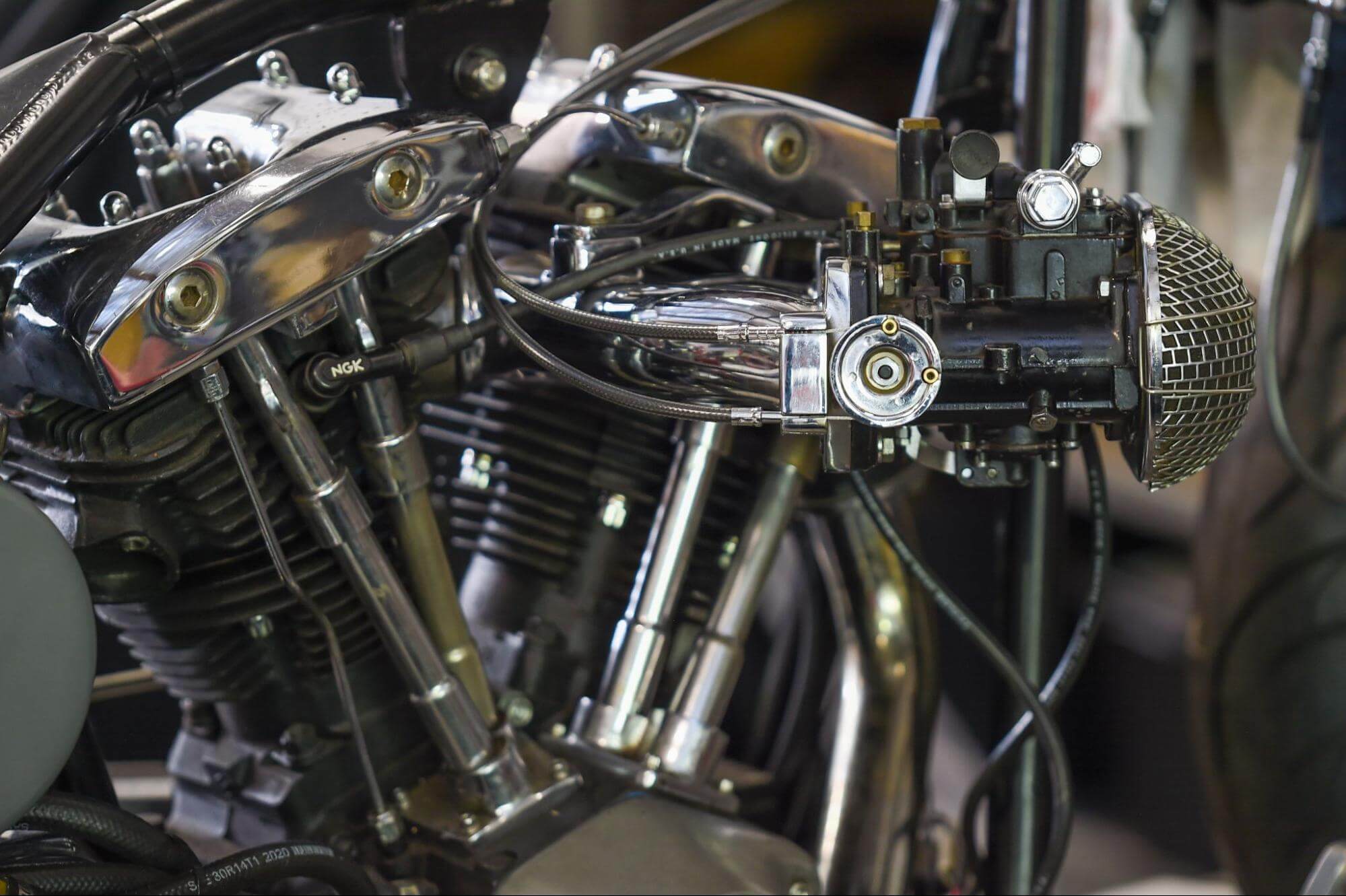There are very few motorcycle manufacturers that have a history as deep as Harley Davidson. The brand’s history dates back over a century, all the way back to 1903, when William S. Harley and Arthur Davidson founded the company. The pair had a shared interest in mechanics and design, which brought them together to create the bikes we know and love today.
As a company, Harley Davidson has humble beginnings. The first-ever Harley Davidson factory was just a 10×15-foot wooden shed in William S. Harley’s father’s backyard. It’s also where they sold their first-ever motorcycle to a local resident and friend, Henry Meyer.
In 1904, Harley-Davidson doubled the size of that factory, and by 1907, the Harley-Davidson Motor Company had been incorporated. By 1908, the business expanded, and Chicago businessman Carl H. Lang became the first official Harley Davidson dealer. He began selling the motorcycles out of his Windy City shop.
Now, over 120 years later, the brand is not only surviving, it’s thriving. Harley Davidson is one of the most iconic brands in the motorcycle industry and worldwide. In 2023 alone, Harley Davidson produced over 162,00 motorcycles.
While there is no exact number for the amount of bikes the company has produced since its inception, it would be well into the millions. If you include discontinued models, the company has produced nearly 50 different production models.
In this article, we’ll be delving into the history of Harley engines and discuss the evolution of Harley engines. Since the first bikes in the early 1900s, the engines have rapidly evolved, improving performance and efficiency.
The Evolution of Harley Davidson Engines
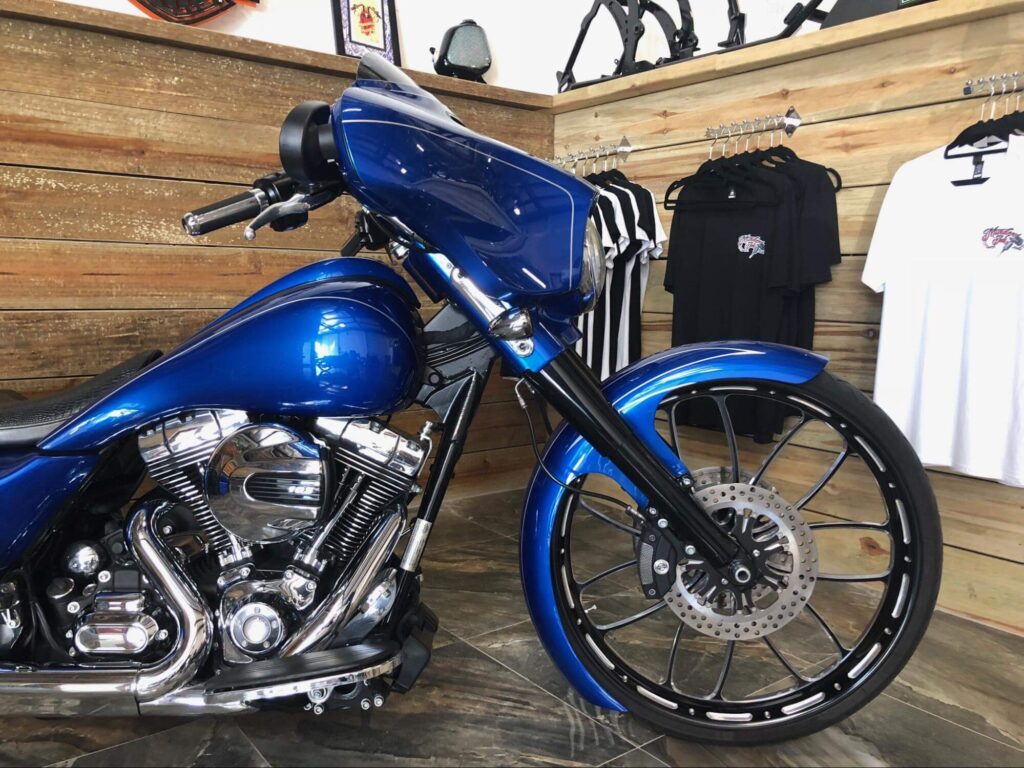
The evolution of the Harley engines reflects the growth of the brand itself and technology at the time. It’s fascinating to see how the company has grown through the advancements it made with its engine technology. Below, we’ve outlined the evolution of their engines.
Model 1 (1903)
William S. Harley and Arthur Davidson made their first-ever motorcycle prototype, retroactively called ‘Model 1’ in 1903. Compared to the engines we have today, it would look like a toy. It was just 10ci in displacement (167cc) and only cranked out two-horsepower.
However, this puny two-horsepower engine would be the giant all other Harley Davidson engines would build on. This engine wasn’t completely Harley and Davidson’s invention. It took heavy inspiration from a motorised European contraption, the De Dion-Bouton tricycle.
F-head (1911 – 1929)
In 1911, the era of the iconic F-head engines started. These engines came in two sizes, 61ci and 74ci (1,000cc and 1,210cc). The largest version of the F-head engine featured 24 horsepower.
The F-heads produced by Harley Davidson from 1911 to 1929 featured a dual-cylinder design, which quickly grew popular. It was widely used by various motorcycle manufacturers back in the early 1900s, including Harley Davidson’s main rival, and in the car industry.
Flathead (1929 – 1973)
Back in the early 1900s, engines for cars and motorcycles didn’t have official names. Instead, it was more common for owners to give the engines unofficial names inspired by physical aspects, such as the Flathead engine being named after its flat-topped cylinder heads.
The Flathead engine featured various incarnations and improvements over the years. It originally started as a 45ci (737cc) but later grew to as large as 80ci (1,311cc). In its largest form, the flathead was capable of delivering 34 horsepower.
Knucklehead (1936 – 1948)
Around the same time that the Flathead was in its prime, Harley Davidson brought forth another engine design, the Knucklehead. This engine was nicknamed based on the account of its rocker boxes.
The Flathead was a valve-in-block engine, whereas the Knucklehead was a new breed of V-twin with an overhead valve. This was the first time this kind of configuration would be used in a Harley engine design.
Panhead (1948 – 1965)
After surviving the ordeals of the Great Depression, Harley Davidson was in an all-out war with their rival Indian. Along with their Knucklehead and Flathead engines, the manufacturer launched a new engine, the Panhead.
The Panhead was named after the fact that its rocker covers looked like pans. It was meant to be a replacement for the Knucklehead-styled engines. While Harley Davidson has discontinued the engine, it is still popular in custom builds.
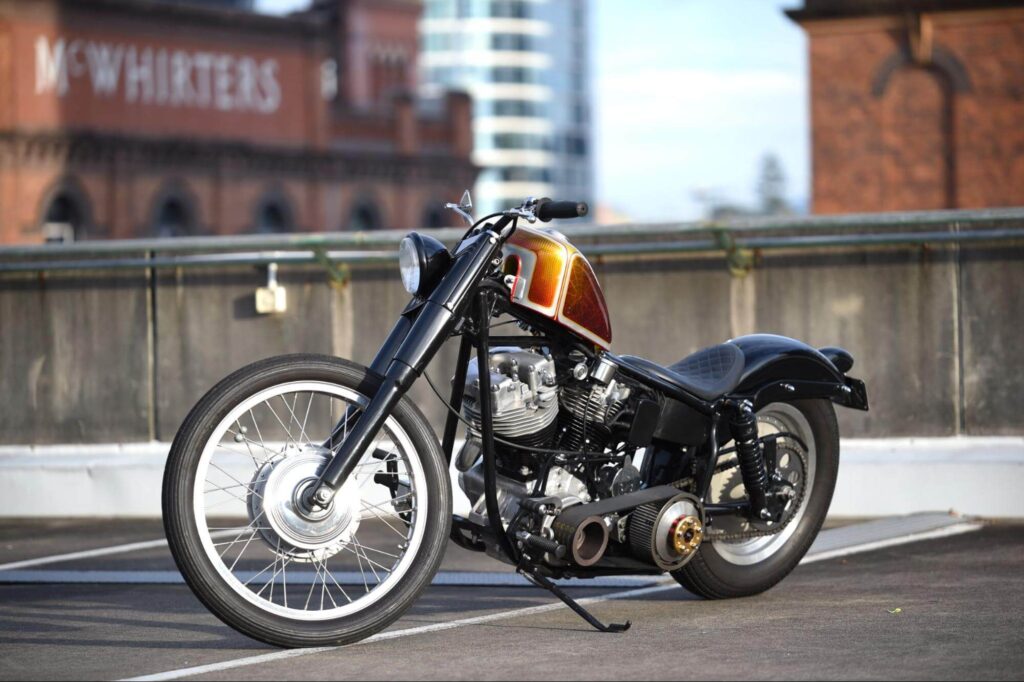
Shovelhead (1966 – 1984)
Where the Panhead is considered one of the most attractive Harley Big Twin engines, the Shovelhead would take the crown for being one of the most successful. The Shovelhead powered all of the company’s Big Twin motorcycles during its years on the market.
Ironhead (1952 – 1986)
The Ironhead was the last Harley Davidson engine to feature ‘head’ as part of its name. It was first introduced in 1952 and quickly became the beating heart for Harley Davidson’s Sportster models.
The Ironhead got its nickname because its cylinder heads were made of iron instead of the industry standard aluminium. The Ironhead featured a two-cylinder V-twin design that was capable of delivering 40hp and a top speed of 161kph in early iterations.
Evolution (1984 – 1999)
The Evolution, known as ‘Evo’ amongst true Harley Davidson riders, was launched as the Ironhead was in its final years. The Evo was launched in 1984 and was designed to power the new breed of Milwaukee two-wheelers at the time, the Softail model.
The Evolution is technically an evolution of the Shovelhead engine. It features an improved design that allows for more torque while requiring less fuel. The Evolution engine also went on to power a few of the company’s Sportster models.
Twin Cam (1998 – 2017)
Despite the success and popularity of the Evo engine, it wasn’t without its issues. This led the company to go back to the drawing board because the Evo was prone to structural weaknesses and even leakage.
Harley Davidson wanted to design an engine that provided more power for its Softail and touring range of bikes and fixed the concerns with the Evo model. This led to the creation of the Twin Cam, which debuted in 1998.
Revolution (2001 – 2017)
In 2001, Harley Davidson came out of left field and entered the muscle bike market with a new range of bikes called V-Twin Racing Street Custom (VRSC). These new bikes were powered by a new engine known as the Revolution, which was designed by Harley in partnership with Porsche Engineering.
The Revolution engine was a huge departure from any of the engines Harley had made before. For example, instead of the 45-degree configuration, it comes at 90 degrees. The engine was discontinued in 2017, but its legacy still lives on through custom builds and the Revolution Max.
Milwaukee-Eight (2016 – Present)
The Milwaukee-Eight was first introduced in 2016 and is the ninth engine in its Big Twin line. The Milwaukee-Eight powers many of Harley’s bikes. Pretty much every Touring and Trike bike from 2017 onwards features the engine.
Revolution Max (2021 – Present)
The Revolution Max is the newest engine type introduced by the manufacturing company. It was created to power the manufacturer’s first entry into the adventure market—the Pan America. Since then, it has also been used in new Sportster models.
The Revolution Max features a lot of similarities with the original Revolution engine that was made in partnership with Porsche Engineering. For instance, it brings back the 60-degree configuration.
Screamin’ Eagle (Present)
If you want power, Harley Davidson recently released its most powerful engine model, featuring a 41% increase over the Milwaukee-Eight 117. Harley Davidson’s Screamin’ Eagle 135 Stage IV is the biggest and strongest street engine they’ve ever produced.
The Different Harley Davidson Models
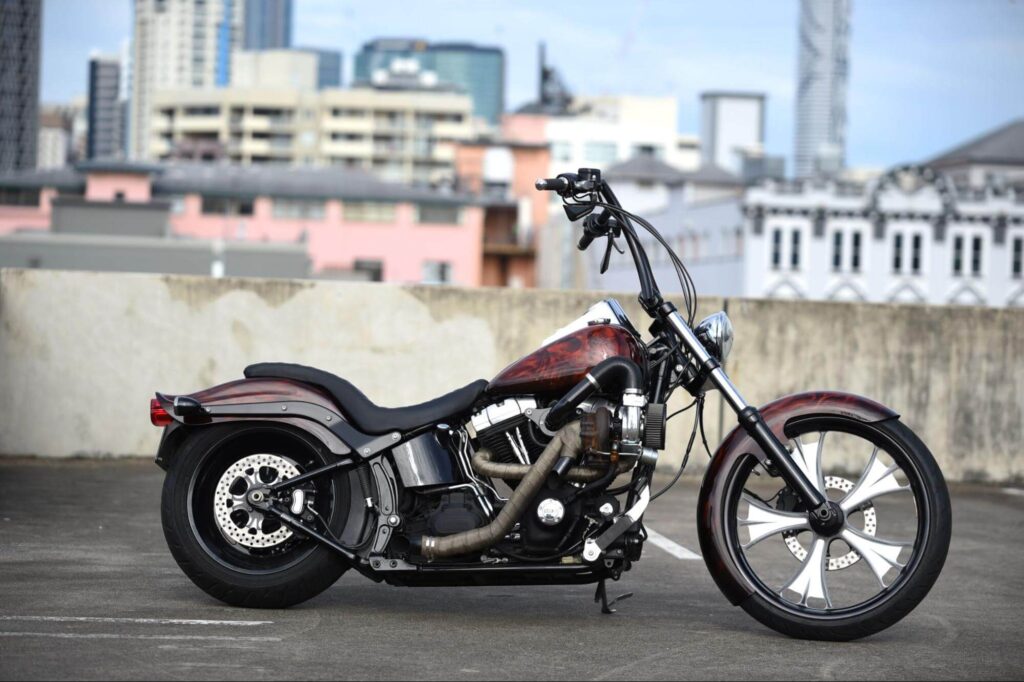
The history of the different Harley-Davidson motorcycles is just as rich as the engines themselves. The manufacturer offers a diverse lineup of motorcycles dating back to 1903 with the very first pre-war models. Below, we’ve outlined a few of the different model families available.
Sportster
The Sportster line of motorcycles features a compact design, aimed towards comfort, city riding, and beginners. Models in this family include the Sportster S and Iron 883.
Softail
The Softail line of Harley bikes succeeded the Dyna in 2018. This is because they wanted to attract a new demographic, and the Dyna chassis wasn’t compatible with the new Milwaukee-Eight engine. It’s perfect for everyday use and is lighter than Dyna models.
Trike
Harley Davidson’s Trike bikes feature a unique three-wheel design, which offers more stability and safety and is ideal for long rides. A few models part of the Trike family are the Tri Glide and Freewheeler.
Touring
Harley Davidson’s Touring range of motorcycles is designed for long-distance rides. They are built with comfort in mind, large fuel tanks, and storage. Some models in this family are the Road Glide and Street Glide.
Dyna
The Dyna was discontinued in 2018 (succeeded by the Softail) but is still a popular pick if you’re looking to get into the Harley-Davidson family. This line is known for its V-twin engines and distinctive designs.
Get Your Harley Customised and Serviced at Taverner Motorsports
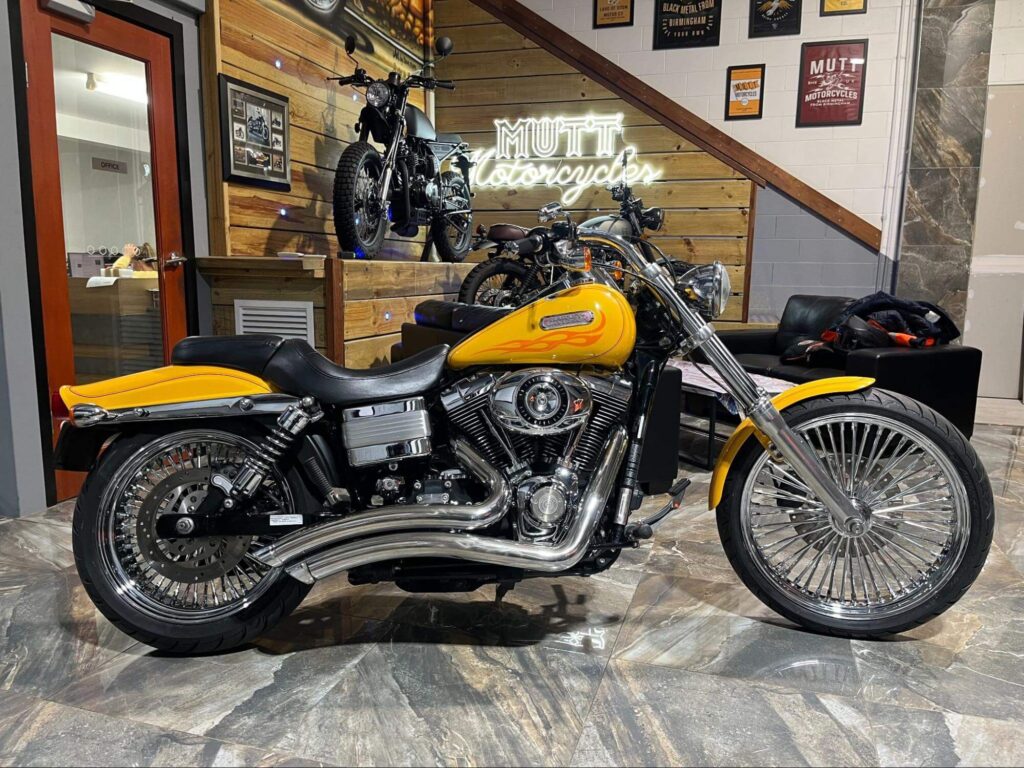
Just like any other motorcycle model, a Harley Davidson requires regular maintenance, servicing, repairs, and detailing. Here at Taverner Motorsports, our experienced staff can help with all Harley service work, including the supply and fitment of genuine and aftermarket parts.
At Taverner Motorsports, we specialise in Harley Davidson bikes. While we do work on all makes and models, Harleys are our area of interest. We have decades of experience working on Harley bikes dating back to 1975. You can trust our team has the expertise and skill for minor and major servicing, repair work, detailing, and custom upgrades.
If you’re looking to get the most out of your Harley, we also offer performance work. This includes TurboCharger and Supercharger kits. Taverner Motorsports is also an authorised PROCHARGER dealer for Harley Davidson kits, which are sourced directly from the manufacturer in the U.S.
If you have any questions about the Harley motorcycle services we offer or want to book your motorcycle with us, contact us today and request a quote. We’d love to be your go-to motorcycle workshop for all your Harley Davidson needs.
